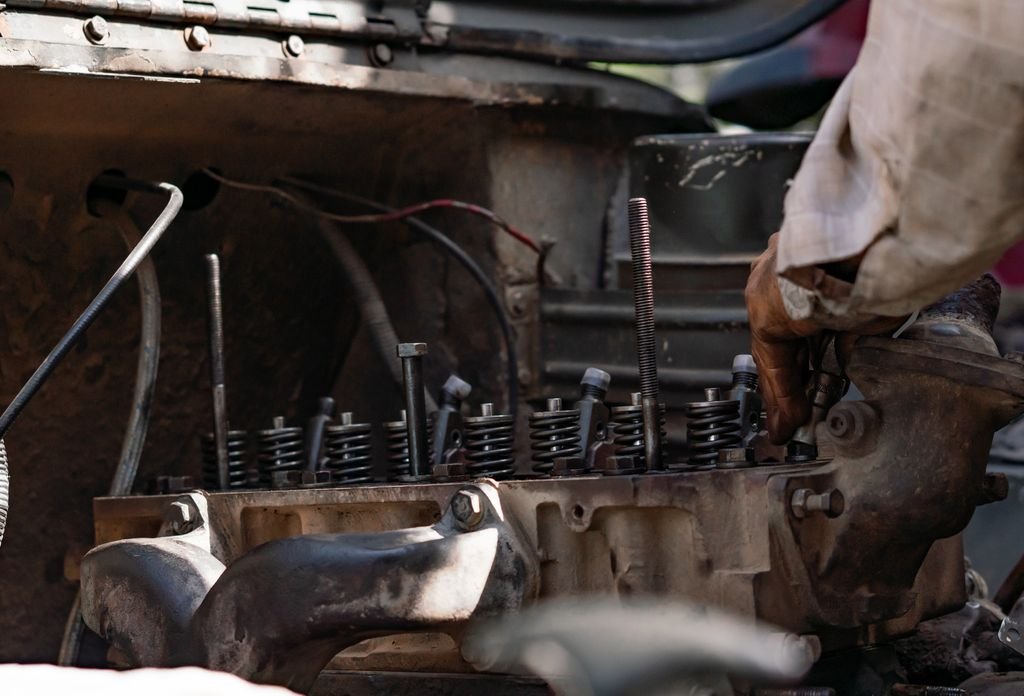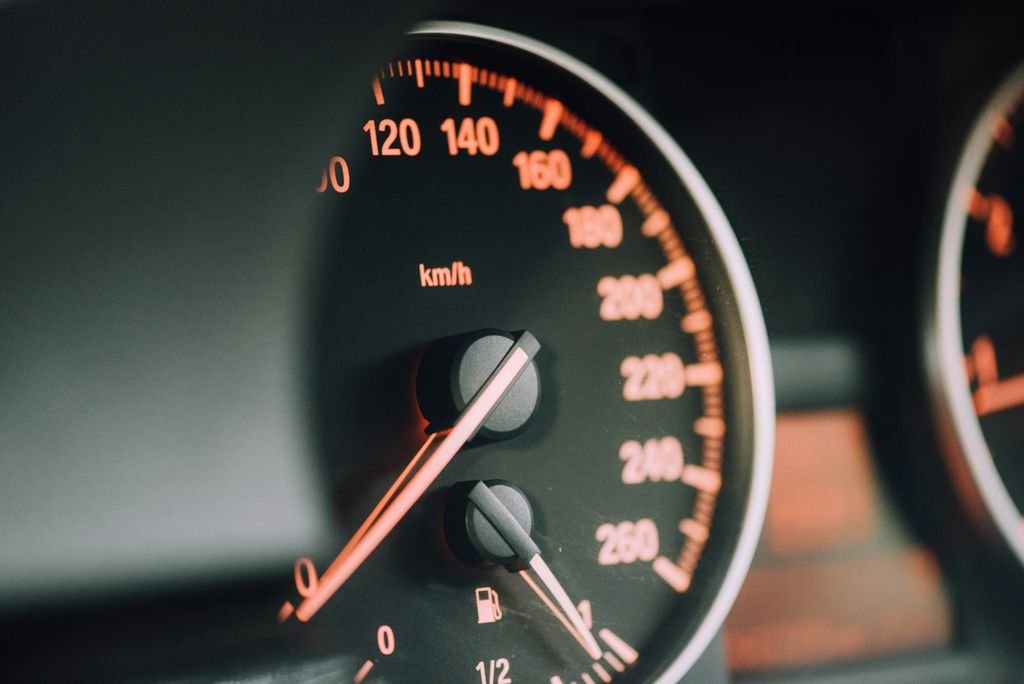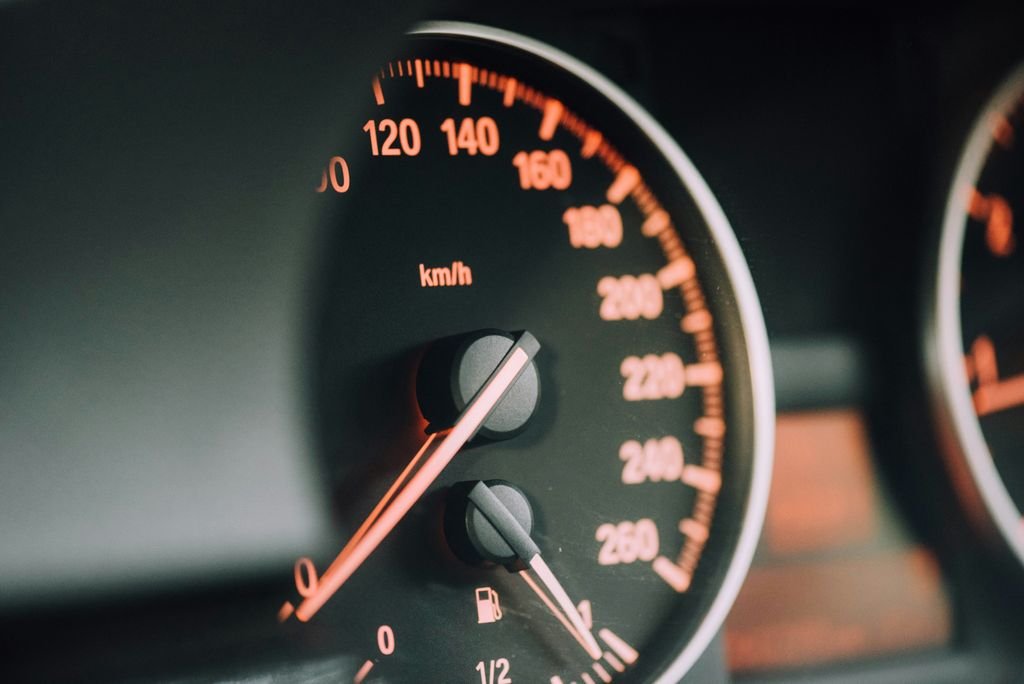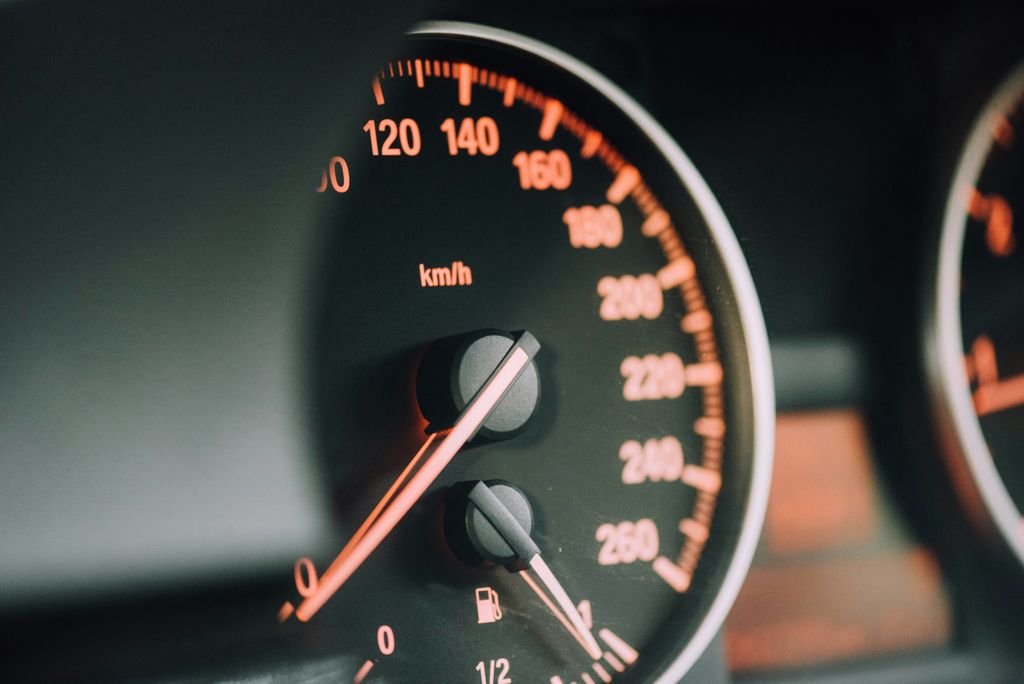Proper maintenance is essential to keep your car running smoothly and extend its lifespan. Regular oil changes, tire maintenance, brake system care, battery maintenance, and air filter replacement are some of the key tasks you need to perform. In this article, we will discuss the importance of these maintenance tasks and provide key takeaways to help you keep your car in top shape.
Key Takeaways
- Regular oil changes are crucial to keep your engine running smoothly.
- Check your tire pressure regularly and rotate your tires to ensure even wear.
- Pay attention to signs of brake problems and replace brake pads when necessary.
- Test your battery regularly and clean the terminals to prevent corrosion.
- Replace your air filter regularly to maintain good air quality and improve fuel efficiency.
Regular Oil Changes
Why Oil Changes are Important
Regular oil changes are crucial for maintaining the health and performance of your car’s engine. Clean and fresh oil helps lubricate the moving parts of the engine, reducing friction and preventing excessive wear and tear. It also helps to keep the engine cool by dissipating heat. Neglecting regular oil changes can lead to a buildup of dirt, debris, and sludge in the engine, which can cause damage and decrease fuel efficiency.
To illustrate the importance of regular oil changes, here is a table summarizing the potential benefits:
| Benefits of Regular Oil Changes |
|---|
| Improved engine performance |
| Extended engine life |
| Better fuel efficiency |
| Reduced emissions |
It’s clear that regular oil changes are not just a routine maintenance task, but a vital aspect of keeping your car in top shape. By following the manufacturer’s recommended oil change intervals and using the right type of oil for your car, you can ensure optimal engine performance and longevity.
Tip: If you’re unsure about when to change your oil or what type of oil to use, consult your car’s owner manual or consult with a trusted mechanic.
How Often Should You Change Your Oil
Regular oil changes are essential for maintaining the health and performance of your car’s engine. The frequency at which you should change your oil depends on several factors, including the type of oil you use, your driving habits, and the manufacturer’s recommendations. As a general rule of thumb, it is recommended to change your oil every 3,000 to 5,000 miles or every three to six months, whichever comes first.
To determine the best oil change interval for your car, refer to your vehicle’s owner’s manual or consult with a trusted mechanic. They can provide you with specific guidelines based on your car’s make, model, and engine type.
It’s important to note that neglecting regular oil changes can lead to a buildup of dirt, debris, and sludge in your engine, which can cause premature wear and damage. By staying on top of your oil change schedule, you can ensure that your engine stays clean and lubricated, promoting optimal performance and longevity.
Here is a table summarizing the recommended oil change intervals for different types of oil:
| Oil Type | Recommended Change Interval |
|---|---|
| Conventional | Every 3,000 to 5,000 miles or every three to six months |
| Synthetic | Every 7,500 to 10,000 miles or every six to twelve months |
| High Mileage | Every 5,000 to 7,500 miles or every three to six months |
Remember, regular oil changes are a small investment that can have a big impact on the overall health and longevity of your car’s engine.
Choosing the Right Oil for Your Car
When it comes to choosing the right oil for your car, it’s important to consider the manufacturer’s recommendations. They provide specific guidelines based on your car’s engine and performance requirements. Using the wrong type of oil can lead to engine damage and reduced performance.
Additionally, you should also consider the viscosity of the oil. Viscosity refers to the oil’s thickness and its ability to flow at different temperatures. The viscosity grade recommended by the manufacturer ensures optimal engine protection and performance.
To make it easier for you, here’s a table summarizing the different types of oils and their recommended applications:
| Oil Type | Recommended Applications |
|---|---|
| Synthetic | High-performance engines |
| Conventional | Everyday driving |
| Blend | Balanced performance |
Remember, choosing the right oil and following the manufacturer’s recommendations is crucial for keeping your car running smoothly and efficiently.
Tire Maintenance
Checking Tire Pressure
Maintaining the correct tire pressure is crucial for optimal performance and safety. Underinflated tires can lead to poor fuel efficiency and increased tire wear, while overinflated tires can result in a harsh ride and reduced traction. To ensure your tires are properly inflated, follow these steps:
- Use a tire pressure gauge to check the pressure of each tire.
- Refer to your vehicle’s owner’s manual or the sticker on the driver’s side door jamb to find the recommended tire pressure.
- If the tire pressure is too low, add air until it reaches the recommended level.
- If the tire pressure is too high, release some air until it reaches the recommended level.
Remember to check your tire pressure regularly, especially before long trips or when the weather changes. Proper tire pressure not only improves fuel efficiency and tire life but also enhances vehicle handling and safety.
Tip: It’s a good idea to invest in a portable tire inflator or keep a tire pressure gauge in your vehicle for convenience.
Rotating Your Tires
Regular tire rotation is an essential part of car maintenance. It helps ensure even wear on your tires, which can extend their lifespan and improve overall performance. Tire rotation involves moving each tire to a different position on the car, typically from front to back or side to side. This helps distribute the weight and wear more evenly across all four tires.
There are a few key benefits to regularly rotating your tires:
- Improved Traction: Rotating your tires helps maintain consistent traction on the road, especially during wet or slippery conditions.
- Even Tire Wear: By rotating your tires, you can prevent uneven wear patterns from developing, which can lead to premature tire replacement.
- Better Fuel Efficiency: Properly rotated tires can improve fuel efficiency by reducing rolling resistance.
To determine the recommended tire rotation interval for your specific vehicle, consult your car’s owner’s manual or check with a trusted mechanic. They can provide guidance based on your driving habits, vehicle type, and tire specifications.
Replacing Worn-out Tires
When it comes to replacing worn-out tires, there are a few important factors to consider:
-
Tire Tread Depth: Check the tread depth of your tires regularly to ensure they are still safe to use. The minimum legal tread depth is typically 2/32 of an inch, but it is recommended to replace tires when the tread depth reaches 4/32 of an inch for better traction and performance.
-
Tire Age: Tires can deteriorate over time, even if they have plenty of tread left. It is recommended to replace tires that are more than six years old, regardless of their tread depth.
-
Tire Type: Choose the right type of tire for your specific driving needs. Consider factors such as weather conditions, road surfaces, and your vehicle’s requirements.
-
Tire Rotation: Regularly rotating your tires can help extend their lifespan and ensure even wear. Consult your vehicle’s owner’s manual for the recommended tire rotation schedule.
Remember, properly maintained tires are essential for your safety on the road.
Brake System Care
Signs of Brake Problems
When it comes to your car’s brakes, it’s important to be aware of any signs of problems. Ignoring brake issues can lead to serious safety risks and costly repairs. Here are some common signs that indicate your brakes may need attention:
- Squeaking or squealing noises: If you hear high-pitched noises when you apply the brakes, it could be a sign that your brake pads are worn and need to be replaced.
- Vibrations or pulsations: If you feel vibrations or pulsations in the brake pedal when you apply pressure, it could indicate a problem with the brake rotors.
- Soft or spongy brake pedal: If your brake pedal feels soft or spongy when you press it, it could be a sign of air in the brake lines or a problem with the brake fluid.
It’s important to address these signs of brake problems promptly to ensure the safety of yourself and others on the road. If you notice any of these signs, it’s recommended to have your brakes inspected by a qualified mechanic.
Replacing Brake Pads
When it comes to maintaining your brake system, one crucial task is replacing brake pads. Brake pads are an essential component that helps your car come to a stop safely and efficiently. Over time, brake pads wear down and need to be replaced to ensure optimal braking performance.
To replace brake pads, follow these steps:
- Gather the necessary tools: You will need a jack, lug wrench, C-clamp, and new brake pads.
- Secure the vehicle: Park your car on a flat surface and engage the parking brake.
- Remove the wheel: Loosen the lug nuts, lift the car with the jack, and remove the wheel.
- Remove the old brake pads: Locate the brake caliper, remove the retaining clips or bolts, and take out the old brake pads.
- Install the new brake pads: Place the new brake pads into the caliper, ensuring they are properly aligned.
- Reassemble and test: Reattach the retaining clips or bolts, put the wheel back on, and test the brakes before driving.
Remember, if you’re not comfortable performing this maintenance task yourself, it’s always best to consult a professional mechanic.
Flushing Brake Fluid
Flushing the brake fluid is an important maintenance task that should be done regularly to ensure the proper functioning of your car’s braking system. Brake fluid is a crucial component that transfers the force from your foot on the brake pedal to the brake calipers, allowing your car to stop effectively.
During the flushing process, old brake fluid is removed and replaced with fresh fluid, which helps remove any contaminants or moisture that may have accumulated over time. This helps maintain the integrity of the brake system and prevents brake fade or failure.
To flush the brake fluid, follow these steps:
- Lift the car and secure it on jack stands.
- Locate the brake fluid reservoir and remove the cap.
- Attach a clear plastic tube to the brake bleeder valve.
- Open the valve and have a helper press the brake pedal.
- Close the valve and repeat the process for each brake.
It is recommended to consult your car’s manual or seek professional help if you are unsure about performing this task yourself.
Tip: Flushing the brake fluid every two to three years or as recommended by your car manufacturer can help maintain the performance and safety of your braking system.
Battery Maintenance
Testing Your Battery
Testing the battery is an important part of battery maintenance. It helps determine the health and performance of the battery. There are several ways to test a car battery:
- Voltage Test: This test measures the voltage output of the battery. A fully charged battery should have a voltage reading of around 12.6 volts. If the voltage is significantly lower, it may indicate a weak or dying battery.
- Load Test: This test checks the battery’s ability to deliver power under load. It involves applying a load to the battery while monitoring its voltage. If the voltage drops below a certain threshold, it may indicate a weak battery.
- Hydrometer Test: This test is used for batteries with removable caps. It measures the specific gravity of the battery’s electrolyte to determine its state of charge. A low specific gravity reading may indicate a weak or discharged battery.
It is recommended to test the battery regularly, especially before long trips or during extreme weather conditions. If the battery fails any of the tests, it may be time to replace it.
Cleaning Battery Terminals
Cleaning the battery terminals is an important maintenance task that helps ensure proper electrical connections and prolong the life of your car battery. Over time, corrosion and dirt can build up on the terminals, hindering the flow of electricity. To clean the battery terminals, you will need a few basic tools:
- Baking soda
- Water
- Wire brush
Steps to clean the battery terminals:
- Start by disconnecting the negative terminal first, followed by the positive terminal.
- Mix a solution of baking soda and water to create a paste.
- Apply the paste to the battery terminals and use a wire brush to scrub away any corrosion or dirt.
- Rinse the terminals with clean water and dry them thoroughly.
- Reconnect the positive terminal first, followed by the negative terminal.
Tip: It’s a good idea to clean the battery terminals regularly, especially if you live in an area with high humidity or salt exposure. This will help prevent corrosion and ensure a reliable electrical connection.
Replacing a Dead Battery
When your car battery dies, it’s important to replace it as soon as possible to avoid getting stranded. Here are some steps to follow when replacing a dead battery:
-
Safety first: Before replacing the battery, make sure to turn off the engine and remove the key from the ignition. Also, wear gloves and safety glasses to protect yourself from any potential hazards.
-
Locate the battery: The battery is usually located under the hood of the car. Refer to your car’s manual if you’re unsure about its location.
-
Disconnect the old battery: Start by disconnecting the negative terminal (marked with a minus sign) and then the positive terminal (marked with a plus sign). Use a wrench or pliers to loosen the bolts and carefully remove the cables.
-
Remove the old battery: Once the cables are disconnected, carefully lift the old battery out of its tray. Be cautious as batteries can be heavy.
-
Install the new battery: Place the new battery in the tray and connect the positive cable first, followed by the negative cable. Make sure the connections are tight.
-
Test the new battery: Start the car and check if it starts without any issues. If everything is working properly, you have successfully replaced the dead battery.
Remember, if you’re unsure about replacing the battery yourself, it’s always best to consult a professional.
Air Filter Replacement
Importance of a Clean Air Filter
A clean air filter is essential for the proper functioning of your car’s engine. It plays a crucial role in preventing dirt, dust, and other contaminants from entering the engine. By filtering out these particles, the air filter helps maintain the quality of air that is used for combustion in the engine.
Regularly replacing your air filter can improve fuel efficiency and prolong the life of your engine. A clogged or dirty air filter can restrict airflow, leading to decreased performance and reduced fuel economy. It is recommended to check and replace your air filter according to the manufacturer’s guidelines.
To ensure your air filter is always clean, you can follow these steps:
- Remove the air filter housing cover.
- Take out the old air filter.
- Inspect the new air filter for any damage.
- Install the new air filter in the correct orientation.
- Secure the air filter housing cover.
Remember, a clean air filter is vital for the overall health and performance of your car’s engine.
When to Replace Your Air Filter
Regularly replacing your air filter is essential for maintaining the performance and longevity of your car’s engine. A clogged or dirty air filter can restrict airflow to the engine, leading to reduced fuel efficiency and potentially causing damage to the engine over time.
To determine when to replace your air filter, it’s recommended to follow the manufacturer’s guidelines. However, some general indicators that your air filter may need replacement include reduced acceleration, decreased fuel efficiency, or a noticeable decrease in engine power.
Table: Signs that indicate it’s time to replace your air filter
| Sign | Description |
|---|---|
| Reduced acceleration | If you notice a delay in your car’s response when you press the accelerator, it could be a sign of a clogged air filter. |
| Decreased fuel efficiency | A dirty air filter can cause your car to consume more fuel than usual. |
| Decreased engine power | If your car feels sluggish or lacks power, a clogged air filter may be the culprit. |
Tip: Regularly inspecting and replacing your air filter can help improve your car’s performance and fuel efficiency.
How to Replace an Air Filter
To replace an air filter in your car, follow these simple steps:
-
Locate the air filter housing, which is usually a rectangular box with clips or screws.
-
Open the housing by removing the clips or unscrewing the screws.
-
Take out the old air filter and inspect it for dirt and debris.
-
If the filter is dirty or clogged, replace it with a new one.
-
Make sure the new filter is properly aligned and fits snugly in the housing.
-
Close the housing by securing the clips or screws.
-
Start the car and check for any unusual sounds or issues with the air flow.
Remember, replacing the air filter regularly is important for maintaining good air quality in your car’s cabin and ensuring optimal performance of the engine.
Conclusion
In conclusion, regular maintenance is crucial for keeping your car in top shape. By using the essential tools mentioned in this article, such as tire pressure gauge, oil filter wrench, and battery charger, you can ensure that your car performs optimally and lasts longer. Don’t neglect these important tasks and tools, as they can save you time, money, and potential breakdowns in the long run.
Frequently Asked Questions
How often should I change my oil?
It is generally recommended to change your oil every 3,000 to 5,000 miles or as recommended by your vehicle’s manufacturer.
What type of oil should I use for my car?
The type of oil you should use depends on your car’s make and model. Refer to your vehicle’s owner’s manual or consult with a professional mechanic for the recommended oil type.
How can I check my tire pressure?
You can check your tire pressure using a tire pressure gauge. Simply remove the valve cap from each tire, place the gauge on the valve stem, and read the pressure measurement.
When should I rotate my tires?
Tire rotation is typically recommended every 6,000 to 8,000 miles or as specified by your vehicle’s manufacturer. Regular tire rotation helps ensure even wear and extends the lifespan of your tires.
How do I know if my brakes need to be replaced?
Signs that your brakes may need to be replaced include squeaking or grinding noises, reduced brake responsiveness, and a vibrating brake pedal. If you notice any of these signs, it is recommended to have your brakes inspected by a professional.
Why is it important to clean battery terminals?
Cleaning battery terminals helps remove corrosion and buildup, ensuring a good electrical connection between the battery and the vehicle’s electrical system. This can help prevent starting and charging issues.





